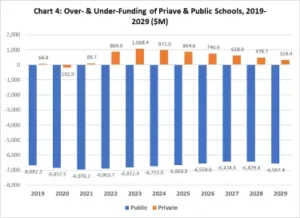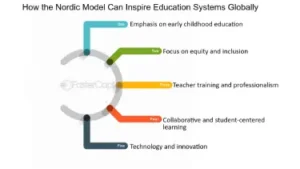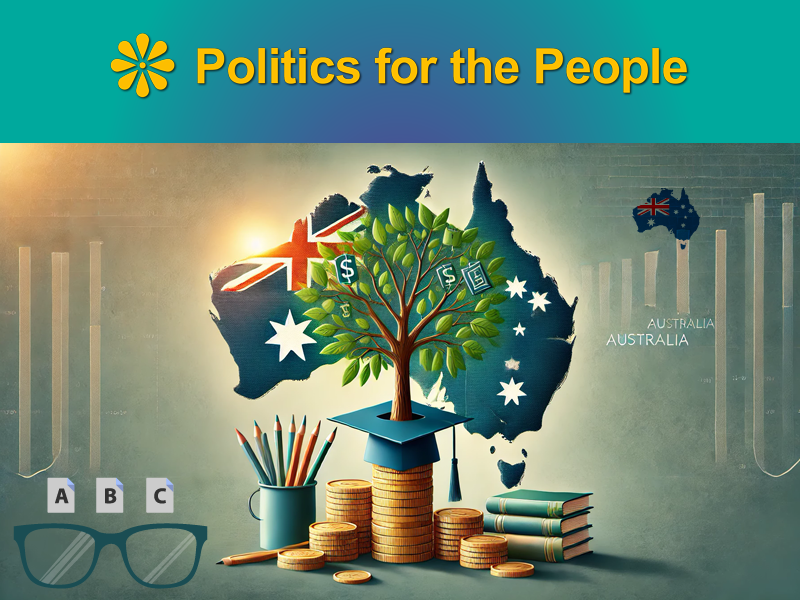Description:
Explore the critical imbalance in education funding in Australia. Join the movement for equitable education!
Introduction
Australia has long celebrated its commitment to giving equal opportunities to all citizens, but the nation’s education funding system tells a different story—one of stark inequality. Public schools, which educate most Australia’s children, receive far less funding per student compared to their private counterparts.
Despite educating students from diverse and often disadvantaged socioeconomic backgrounds, public schools are consistently underfunded, while private schools, many of which cater to wealthier families, benefit from significant government subsidies alongside substantial tuition fees and private contributions.
This funding disparity has created a two-tiered education system that undermines the principles of fairness and equity. Private schools can invest in ultramodern facilities, smaller class sizes, specialized programs, and competitive salaries to attract highly qualified teachers.
Public schools, by contrast, often face budget shortfalls that leave them struggling to support aging infrastructure, buy essential learning materials, and provide adequate support for students with more needs. These challenges are particularly pronounced in rural, regional, and low-income areas, where public schools often serve as the backbone of their communities but receive insufficient resources to fulfill that role effectively.
The consequences of this funding imbalance are far-reaching. While private schools can offer enriched educational experiences that position their students for success, public schools must make do with less, affecting teacher quality, classroom stability, and student outcomes.
This worsens the achievement gap between students from high-income families, who can access well-funded private institutions, and those from disadvantaged backgrounds, who rely on underfunded public education. Such inequality not only compromises individual opportunities but also risks Australia’s broader social and economic future by limiting the potential of the next generation.
This article explores the roots of Australia’s education funding crisis, analysing how current policies have perpetuated this inequity. It also highlights the urgent need for reforms that prioritize fully funded public schools, ensuring that every child—regardless of their postcode or socioeconomic background—has access to a world-class, free public education.
By addressing this imbalance, Australia can move toward a fairer, more inclusive system where education becomes a vehicle for opportunity and progress, not a reflection of inequality.
Understanding The Gap in Education Funding in Australia
Current Funding Statistics and Trends

In 2023, the Australian Government plans to allocate $10.6 billion to government schools, compared to $9.3 billion and $7.4 billion to Catholic and independent schools, respectively. Despite catering to a smaller demographic, private schools receive more than 100% of their Schooling Resource Standard (SRS), while public schools only get 91%. This discrepancy is a result of how funding is divided between federal contributions and state provisions, which often disproportionately favor private institutions.
The Impact on Public vs. Private SchoolsThe Infrastructure and Resource Discrepancy
Private schools, benefiting from higher per-student funding, are often able to invest in state-of-the-art facilities—modern science labs, advanced sports facilities, and technology-rich classrooms. These resources not only enhance the learning environment but also attract highly qualified teachers who are drawn to better-equipped and better-funded schools.
In contrast, public schools frequently struggle with outdated infrastructure, limited technology access, and scarce resources, which can directly impact the quality of education and student engagement.
Teacher Quality and Student Outcomes
The funding disparity between private and public schools significantly affects teacher quality, which in turn influences student outcomes. Private schools, receiving help from both higher tuition fees and government subsidies, can offer more competitive salaries, smaller class sizes, and extensive professional development opportunities.
This enables them to attract and keep highly experienced and specialized educators, often with expertise in niche subjects or advanced qualifications. Access to ongoing training, technology integration, and modern teaching resources equips teachers in private schools with the tools to deliver a more enriched, tailored education.
In contrast, education funding in Australia—particularly those in underfunded or disadvantaged areas—face systemic challenges stemming from limited budgets. Many public schools struggle to offer competitive salaries, professional development, or adequate resources to support teachers in improving their skills and staying updated with modern educational methods. As a result, they experience higher teacher turnover rates, where educators leave for better opportunities in private schools or outside the teaching profession altogether. This turnover disrupts classroom stability, undermining the continuity of learning and student-teacher relationships, which are critical to student success.
Moreover, public schools often contend with larger class sizes, forcing teachers to divide their attention across more students, reducing the opportunity for individualized support. Educators in these environments are often overburdened, managing behavioural issues, administrative demands, and a lack of essential resources, which limits their ability to focus solely on instruction and student development.
The absence of specialized staff, such as subject-specific teachers, learning support professionals, and guidance counsellors, further hinders academic outcomes.
The disparity in teacher quality disproportionately affects students in low-income and rural areas, worsening educational inequity. Students in underfunded public schools are less likely to access advanced coursework, extracurricular programs, and mentorship opportunities, all of which are integral to fostering academic achievement, skills development, and future success.
This gap often leads to poorer academic performance, lower graduation rates, and fewer opportunities for students to pursue higher education or skilled careers.
Addressing these issues requires substantial investment in public education to ensure that schools can provide competitive salaries, professional growth pathways, and sufficient resources for educators. By reducing the funding disparity, public schools can attract and keep high-quality teachers, improve classroom stability, and deliver a level of education that enables all students—regardless of their background—to thrive and reach their full potential.
The Consequences of Unequal School Funding
Educational Opportunities and Student Achievement
Public schools with limited funding often have to cut back on non-core subjects, advanced placement courses, and extracurricular activities. This reduction in offerings can stifle student engagement and limit opportunities for students to excel in diverse areas or discover new interests. Moreover, the lack of advanced courses can disadvantage public school students in competitive college admissions, where such courses are often viewed favorably.
Impact on Innovation and Societal Progress
Schools play a critical role in fostering innovation and creativity among students. Well-funded private schools can afford to implement new teaching methods and technologies that adapt to changing educational demands. Education funding in Australia constrained public school budgets and make it slow to adopt such innovations, potentially stifling the intellectual and creative growth of their students. This not only impacts individual students but can also slow societal progress as a whole, as fewer students are prepared to tackle future challenges with advanced skills and creative solutions.
The Broader Social Implications
Perpetuating Socio-Economic Inequality
The significant differences in school funding exacerbate existing socio-economic disparities. Students from affluent backgrounds are more likely to attend well-funded private schools, receiving a superior education that prepares them for high-paying jobs and further contributes to their economic advantages. Conversely, students from lower socio-economic backgrounds may attend under-resourced public schools, receiving an education that does not fully prepare them for higher education or competitive job markets, perpetuating a cycle of poverty.
Long-Term Effects on Democracy and Social Cohesion
Education is a cornerstone of democratic societies, promoting informed citizenship and social cohesion. When educational disparities exist, they can lead to a fragmented society where segments of the population are less informed and less able to participate fully in democratic processes. This division can undermine social cohesion and exacerbate tensions between different socio-economic groups, leading to a less stable and more divided nation.
Voices for Change: What Can Be Done?
Proposed Changes to Funding Policies

Many advocates for educational reform suggest revising the formula used to allocate funds to ensure that public schools receive at least 100% of their SRS. This adjustment would involve both increased federal funding and more equitable distribution of state funds, ensuring all schools can provide high-quality education.
Learning from Global Best Practices: Finland’s School System
Finland’s education system is often hailed as one of the most equitable in the world. One key aspect of Finland’s approach is the uniform provision of resources. Every school, whether in a wealthy urban area or a rural community, receives similar levels of funding and resources, ensuring that every child has equal access to quality education.
Finnish schools also emphasize teacher autonomy, allowing educators to tailor their teaching methods to their students’ needs, supported by a strong welfare state that ensures children come to school well-nourished and ready to learn.
Additionally, Finland’s teacher education programs are highly selective and rigorous, ensuring that all teachers are highly qualified and well-prepared. This comprehensive support system not only elevates the teaching profession but also ensures high standards across all schools. The Finnish model demonstrates that equitable funding combined with high educational standards and teacher autonomy can lead to exceptional educational outcomes.
How You Can Help Make a Difference
Individual action plays a crucial role in driving policy change. By staying informed, participating in public discussions, and voting for policies that support equitable school funding, individuals can influence government decisions. Engaging with local educational boards and providing community support for public schools are also vital steps toward change. Learning from successful models like Finland’s can guide Australian policymakers and educators in reshaping our own education system toward greater equity and excellence.
These insights into Finland’s education system illustrate how equitable funding and high educational standards can significantly enhance the quality of education, providing valuable lessons for Australia as it seeks to reform its own school funding policies.
Conclusion
The education funding crisis in Australia is a pivotal issue that needs immediate attention to ensure future generations can thrive in an equitable society. By addressing this imbalance, we can uphold the ethos of fair opportunity for all.
Call to Action: Education Funding Australia
Take a stand for fairness in education today! Reach out to your local politicians, participate in community forums, and spread the word on social media. Every voice can help bring about change in our education system.
Questions for Readers
– How do you perceive the current funding model for schools in Australia?
– What changes would you propose to ensure fairness in school funding?
References:
Cashed up schools get $3b in bonus funding: https://www.bordermail.com.au/story/8428991/cashed-up-schools-get-3b-in-bonus-funding-report/
Report reveals growing funding divide between the haves and have-nots across the nation’s education system: https://www.abc.net.au/news/2023-11-20/report-funding-divide-australian-public-private-education-system/103123514
Private schools get bonus funds, public schools suffer: https://thewest.com.au/news/education/private-schools-get-bonus-funds-public-schools-suffer-c-12607027
Private WA schools will be over-funded by millions of dollars a year, teachers’ union report claims: https://thewest.com.au/news/wa/private-wa-schools-will-be-over-funded-by-millions-of-dollars-a-year-teachers-union-report-claims-c-12590086
Report on school funding-Department of Education, Australian Government: https://www.bing.com/search?q=Australian+government+funding+public+schools
Private school funding in Australia has increased at five times rate of public schools, analysis shows: https://www.theguardian.com/australia-news/2022/feb/16/private-school-funding-has-increased-at-five-times-rate-of-public-schools-analysis-shows
The Facts About School Funding in Australia: https://saveourschools.com.au/funding/the-facts-about-school-funding-in-australia/
Reports on school funding: https://www.education.gov.au/schooling/reports-school-funding

